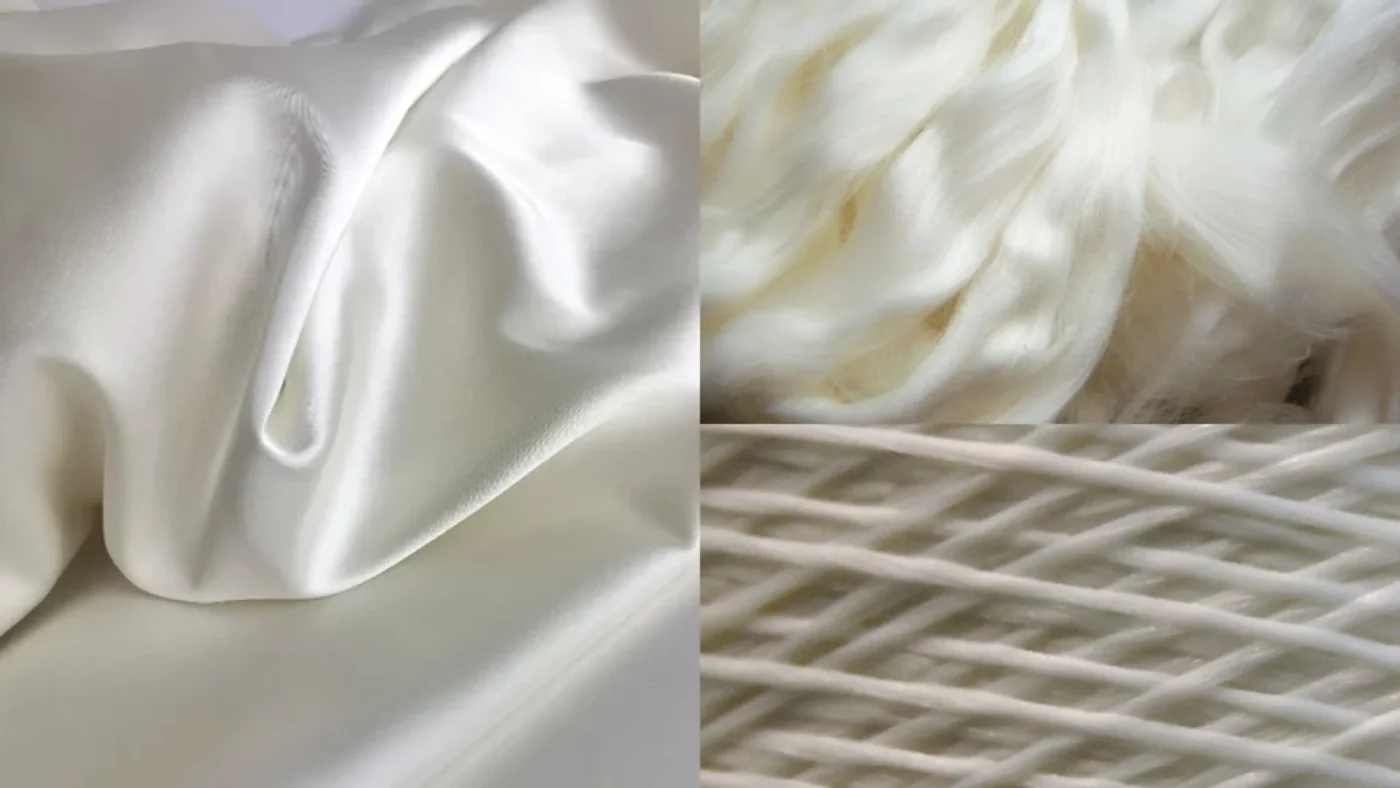Azlon is defined as any fibre made from regenerated protein derived from natural sources. It is produced by converting the raw material to a solution that is extruded through a spinneret (see photo below) and then stretched. The advantages of azlon are that it generally does not accumulate static electricity, is soft and warm, absorbs moisture and does not become matted.
Milk fiber
Based on the casein protein found in milk. Trade names include Lanital, Fibrolane, and Aralac.
The fabric was invented and patented in Italy in 1935 by Antonio Ferretti, following a period of success in the 1930s and 1940s. However, the invention and increased popularity of cheap and durable synthetic fibers left milk fibres in the background.
To produce milk fiber, acid is mixed with milk to extract the casein, then water is evaporated to form casein crystals. The casein is hydrated to a thick syrup and extruded through spinnerets. Then, the resulting fiber is passed through a hardening bath. The continuous fiber is then cut to the desired length.
Zein fiber
Made from corn and maize. Commercially sold as Vicara.
Fabric is soft, tough and strong and has the warmth of wool. It is resistant to mildew, insects, sunlight, and temperatures up to 140 °C. Vicara was usually blended with cotton, wool, or rayon. It was used in suits, sweaters, blankets and pile fabrics.
Made with the crushed meal of corn and maize after the oil is extracted. The meal is dissolved in an alkali bath, then forced through spinnerets to form fine fibrils that are hardened with formaldehyde.
Collagen fiber
Collagen fibre was developed in 2009 in Thailand. Made from collagen, which is extracted from fish scales. It is a fabric which is most closely related to the skin.
The collagen peptides are incorporated into the body of the fibre, so they remain inside it after washing. It is naturally deodorising, has antibacterial and anti-ultraviolet properties, is highly skin-friendly and anti-static.
Is this good for the environment?
It is difficult to say whether azlon is good for the environment because it depends on the production method, the source material, and how the fabric is processed and disposed of. On one hand, azlon is made from renewable natural resources like milk, corn, and fish waste, which could make it more sustainable than petroleum-based synthetic fibres. Azlon is also biodegradable under the right conditions, which means it will break down more easily in nature compared to plastic-based textiles.
However, the production of azlon still involves chemical processing, including the use of acids, alkalis, and sometimes formaldehyde, which can have environmental impacts if not properly managed. In addition, azlon is not widely produced today, and many processes are not yet optimised for large-scale, eco-friendly manufacturing. Transportation, energy use, and water consumption can also affect its sustainability.
In conclusion, azlon has the potential to be an environmentally friendly textile due to its renewable origins and biodegradability, but its actual environmental impact depends on how it is made. If cleaner and safer production methods are used, Azlon could be a very unique alternative to synthetic fibres.

Leave a Reply